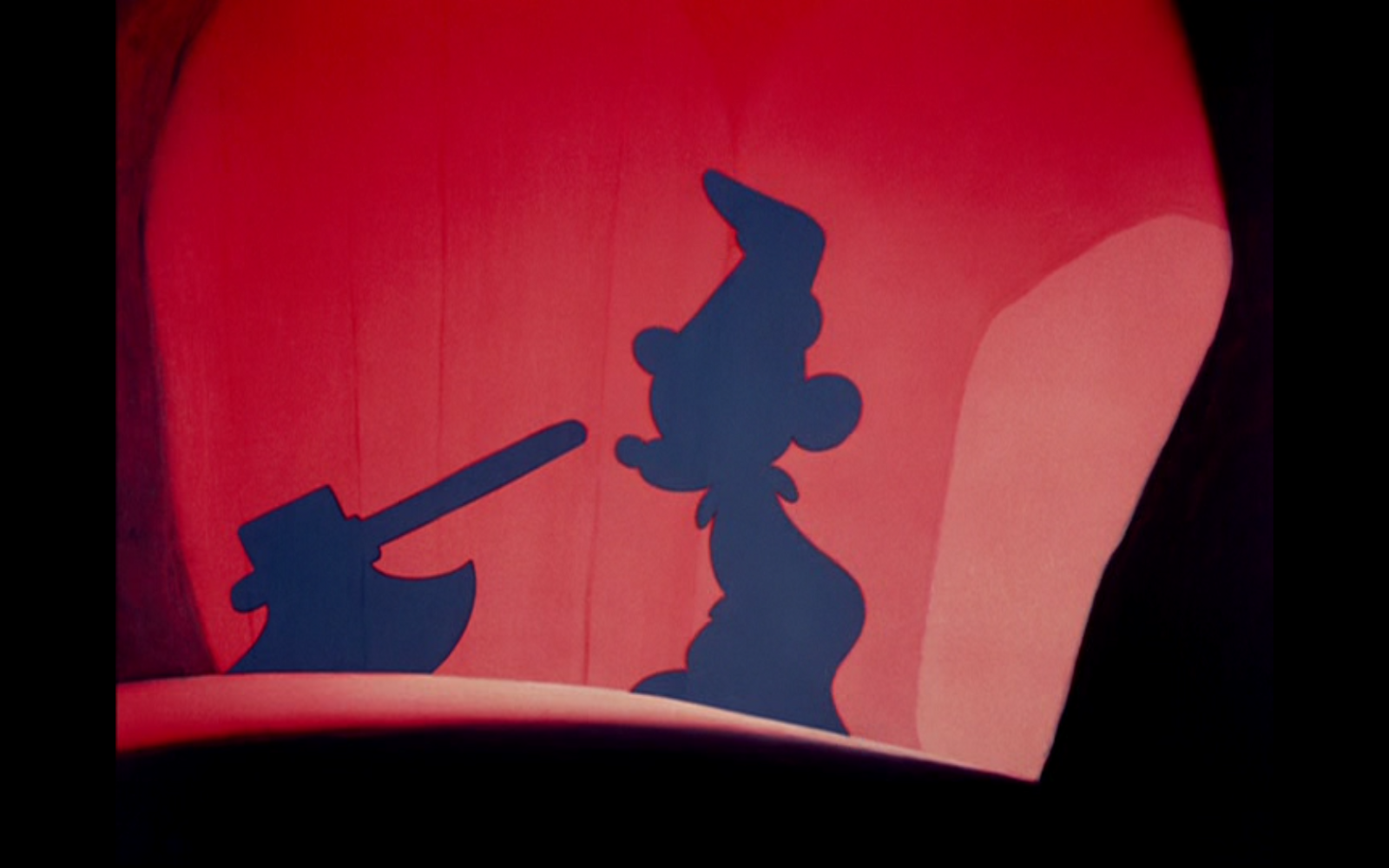Remember This Scene: 'Fantasia'

Every Tuesday, Jeremy Fuster analyzes a critical scene from a popular film. Join him every week as he delves into what exactly makes these critical scenes so memorable and successful.
I have a question for any of you animation buffs out there: can you believe that next year will mark the 75th anniversary of Walt Disney's "Fantasia"? This movie is a legend in the history of animation; and in this not-so-humble writer's estimation, it is Disney's greatest contribution to the medium.
The works ranged from the silly (hippo ballerinas in "Dance Of The Hours") to the nightmarish (the legendary Chernabog invoking evil in "Night On Bald Mountain"). Of course there were some misses, like using Beethoven's "Pastoral Symphony" as the basis for a nauseating Greek mythology piece featuring goofy-looking gods and jock centaurs courting their topless female counterparts who themselves are being courted by half-donkey servant girls that are blatant racist stereotypes. Still, 'Fantasia' remains an ambitious work of art that brought classical music to new audiences and pushed animation to new depths.
Of course, Fantasia's biggest mark on pop culture is the legendary "Sorcerer's Apprentice," a.k.a. Mickey Mouse's magnum opus. The orchestration, written by Paul Dukas, is based on a poem by Johann Wolfgang von Goethe about an apprentice using his master's magic to take a shortcut on his chores, only for his plans to backfire when he realizes he can't control the magic.
READ MORE: Remember This Scene: 'Lord Of The Rings'
For Disney, it made perfect sense for Mickey to play the role of the apprentice. Going back to his debut in "Steamboat Willie", Mickey was a rascal that got into all sorts of trouble. "Sorcerer's Apprentice," the first short to show Mickey in the style we see him today, took Mickey's antics to the greatest extreme imaginable by placing him in Goethe's tale and showing what happens when the Mouse's misbehavior nearly costs him his life.
Today, let's look at the best part of this brilliant tale: the scene where Mickey tries to destroy his creation. He realizes that the broom he has enchanted to carry buckets of water for him is now flooding the sorcerer's chambers, and he has no idea how to stop it. In an act of desperation, Mickey grabs an axe and smashes the broom to pieces…only for the splinters to rebuild into an army of brooms.
In the above video presented by Leonard Maltin, you can see the original plans the animators had for presenting this scene onscreen. Mickey would have been shown chopping away at the broom piece by piece before putting down the axe with a sigh. By showing it onscreen, the scene has the kind of slapstick feel that many cartoons have. Instead, the final cut uses light, color, and shadow to create something far more sinister.
One of the reasons "The Sorcerer's Apprentice" has become such a benchmark of animation is because of its use of shadow to enhance mood. As Mickey sneaks around the chambers and summons the broom to life, his shadow is used to enhance his actions and bring an ominous feel to the magic he is casting. Later, when the brooms get out of control, they are given large shadows to drive home the message that the brooms are now an army that Mickey can't stop.
But the best use of shadows is in the axe scene. Rather than show the violence outright, the shadows allow the audience's imagination to run wild, making Mickey's deed far more dramatic and violent than it would have been had it been shown onscreen. In addition, each strike of the axe is matched with a flash of light and a horn stab from Dukas' music. With each swing, the colors switch to a bloody crimson, drawing even more attention to the sight of Mickey's outline thrashing about with a sharp blade. Mickey has killed the creature that he gave life to…or so he thinks.
READ MORE: Remember This Scene: 'Jurassic Park'
Once he drops the axe, the color drains out of the picture as Mickey slowly returns to the frame. We then see the splinters slowly being willed back to life. Again, color, shadow, and music blend together. With each twitch of the splinters, a foreboding bassoon can be heard, and color briefly returns to the picture. After a few seconds, the bassoons rise up with the broomsticks, and the army is born. The entire sequence of fantastical murder and vengeful resurrection is one of the most nightmarish moments in Disney history, thanks to the creative use of animation elements to build a mood while leaving blanks for the audience to fill in.
Of course, another reason why it's such a horrifying scene is that it's all being done to show Mickey Mouse at his most violent and desperate state of mind. These days, Mickey's primary purpose is to serve as a mascot for the corporate titan that The Walt Disney Company has turned into, so "The Sorcerer's Apprentice" has become a reminder that once upon a time, The Mouse did have a personality…and it wasn't all smiles and chuckles.
Find other "Remember This Scene?" posts here.



